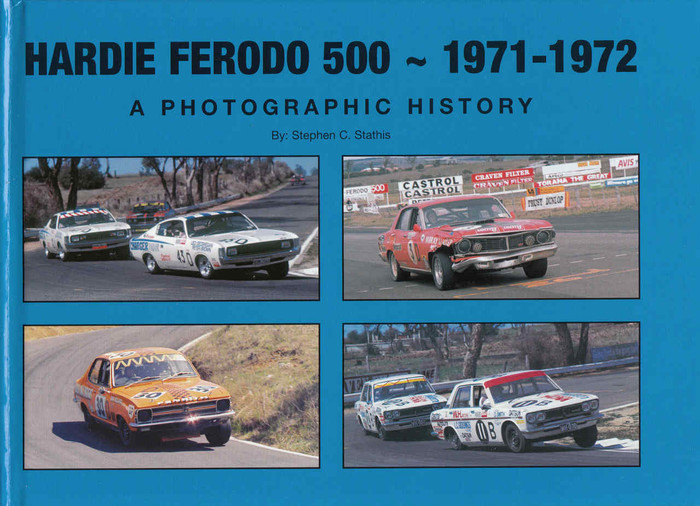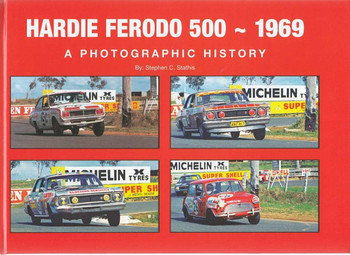Description
Author: Stephen C. Stathis, Paperback, 176 Pages, ISBN: 9780987552327, 2017
The 1971 Hardie Ferodo 500 was still a multi-class event but with Chrysler getting more serious with the new R/T Charger, Holden with an updated LC XU-1 Torana and Ford with the ultra fast GT-HO Phase 3, more and more people were focused on the outright result. Bathurst 1971 was the event where the big-three really stepped up to the plate. Unlike today, in 1971 the Bathurst contenders were easily recognisable, with the cars that raced at the Mountain being similar to the ones that were available at the new car dealer.
At Sandown, in September the new Falcon GT-HO Phase 3s were expected to dominate but after brake problems they were upstaged by the Holden Dealer Team XU-1 Torana of Colin Bond. This defeat was a real blow to Ford's confidence with Bathurst not far away. Put simply the racing Phase 3s had too much speed for the current Hardie Ferodo disc brake compound. The technicians at Hardie Ferodo did not sit on their hands and developed a new compound material in time for the race.
Equipped with the new compound Hardie Ferodo brake pads the GT-HO Phase 3 Falcons were unstoppable at Bathurst during qualifying. With speed that had never been seen at a previous 500, Allan Moffat demolished the lap record to easily qualify on pole position. After qualifying with GT-HOs on the first seven grid positions it was obvious that the Chargers and Toranas would be playing second fiddle to Ford during Sunday's event.
The Supplementary Regulations again made allowance for a driver to complete the entire race solo - with many drivers choosing this option. When the starter's flag dropped on Sunday Moffat led easily and by the time he was making his way on lap two the first 12 outright cars were all GT-H0s. But the race was not about one model and before long the Chargers and Toranas were making inroads as they battled it out for Class D honours. Bond's Torana was in the pits early with a flat tyre but recovered well to eventually finish with a class win. At one stage Moffat was almost two laps ahead of the pack, but backed off to preserve the car's brakes. French in the sister factory car was driving to plan as back-up driver to Moffat but he lost second position with two unscheduled pit stops due to a fuel blockage - losing one lap. Late in the race David McKay was second but he was overtaken by Bob Skelton to make it a Ford one-two-three when the chequered flag fell. Moffat's Bathurst career was certainly enhanced with his fabulous 1971 victory but one driver who has enjoyed equal billing over the years is Bill Brown with his spectacular roll over at the top of the Mountain.
When the dust had settled the Chargers and Toranas proved to be reliable with only four failing to finish. Bond's Torana took Class D honours ahead of the Leo Geoghegan/Peter Brown Charger, with Brock's XU-1 not far behind in third. The Mazda RX2s proved their mettle as did the Datsun 1600s and Mazda 1300s - all with class victories. In spite of a wind that persisted all day, Allan Moffat's Falcon GT-HO Phase 3 completed the race in record time - bettering the 1970 elapsed time by over 20 minutes.
Ford's dominance of the 1971 Hardie Ferodo 500 has gone down in legend - with the marque not being so imperious at the Mountain again until Moffat's team one-two finish in 1977 and the turbo Sierra era of the late 1980s.












